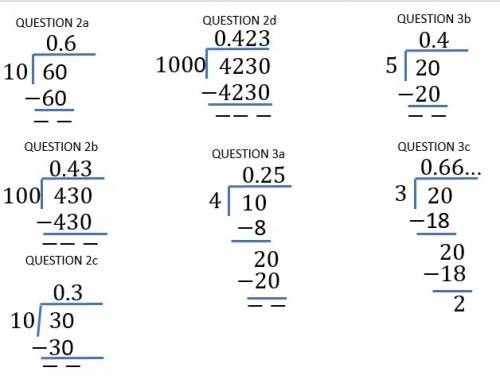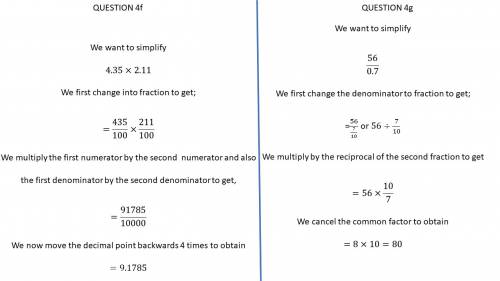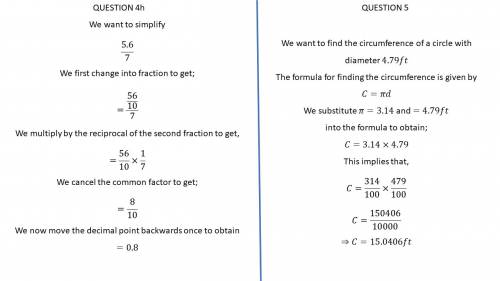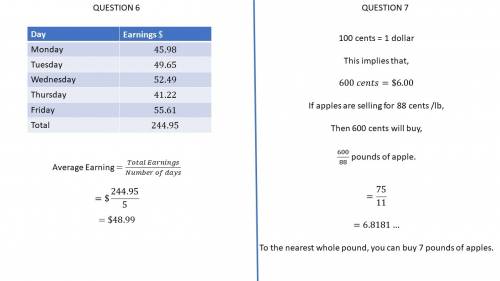 44
44  10
10  10
10 Step-by-step explanation:
H0: u = 150
H1: u ≠ 150
Total sum = 15933.24
N = 100
Mean = 15933.24/100
= 159.3324
σ² = 25954.03 - (159.3324)²/100
σ² = 556.213
σ = √556.213
σ = 23.8162
Testing hypothesis
t = (bar x - u)/ σ/√n
= 159.3324-150/23.8162/√100
= 3.91
We will have a p value of 0.02
0.0002 < 0.01
We reject null hypothesis at 1% level of significance
C. Mean = 159.3324
Se= 2.3936
Df = 100-1 = 99
Critical value at 0.01 = +-2.626
T = x-u/s.e
= -2.626 =( x -150)/2.3936
When we cross multiply and solve this
X = 143.714 for the lower tail
2.626 = (x-159)/2.3936
= 156.286 for upper tail.
We therefore reject H0 at
Bar X <= 143.71
Bar X >= 156.286
At 10%
Critical t = 1.660
-1.660 = (x - 150)/2.3936
Solving this ,
X =146.02 at the lower tail
1.660 = (x-150)/2.3936
X = 153.97
We reject H0 at
X<= 146.03
X>=153.97
Step-by-step explanation:
H0: u = 150
H1: u ≠ 150
Total sum = 15933.24
N = 100
Mean = 15933.24/100
= 159.3324
σ² = 25954.03 - (159.3324)²/100
σ² = 556.213
σ = √556.213
σ = 23.8162
Testing hypothesis
t = (bar x - u)/ σ/√n
= 159.3324-150/23.8162/√100
= 3.91
We will have a p value of 0.02
0.0002 < 0.01
We reject null hypothesis at 1% level of significance
C. Mean = 159.3324
Se= 2.3936
Df = 100-1 = 99
Critical value at 0.01 = +-2.626
T = x-u/s.e
= -2.626 =( x -150)/2.3936
When we cross multiply and solve this
X = 143.714 for the lower tail
2.626 = (x-159)/2.3936
= 156.286 for upper tail.
We therefore reject H0 at
Bar X <= 143.71
Bar X >= 156.286
At 10%
Critical t = 1.660
-1.660 = (x - 150)/2.3936
Solving this ,
X =146.02 at the lower tail
1.660 = (x-150)/2.3936
X = 153.97
We reject H0 at
X<= 146.03
X>=153.97
 3
3  1
1 Step-by-step explanation:
Hello!
The producer needs his cables to have an average breaking strength of 5000 pounds. A lower average breaking strength means that the cable is not adequate, a higher average breaking strength results in an unnecessary increase in production costs.
The sample is of 64 steel cables and the breaking strength of the pieces was recorded.
I always recommend that the first step to any statistic exercise is to establish the study variable that way you'll have fresh in mind the kind of data set you are working with and the type of distribution to expect from them (for example if it is a discrete variable you'd expect a binomial distribution, a continuous variable leads to a normal distribution (exact or approximate) a categorical variable sets the path to work with non-parametrical statistics such as Chi-Square statistics.)
In this example the study variable is:
X: Breaking strength of a steel cable.
This variable is continuous so first I'll use the sample information to test its distribution. Keep in mind that one of the conditions to use the Student t-test is that the variable has a normal distribution.
The p-value for the normality test is 0.8512, comparing it with the level of significance of the test (α: 0.05) the decision is to not reject the null hypothesis of the normality test, so you can conclude that the breaking strength of the steel cables has a normal distribution:
X~N(μ;σ²)
1.
The standard error of the test is the square root of the variance.
Using the following formula you have to calculate the variance:

n=64
∑X= 330174.88
∑X²= 1718980202.34

S²= 2478376895
S= 497.8329 ≅497.833
2.
For this test the hypotheses are:
H₀: μ = 5000
H₁: μ ≠ 5000

The sample mean is:
Xbar= ∑X/n)= 330174.88/64=5158.98

t= 158.98/62.229= 2.555
3.
This test is two-tailed and so is the p-value. I've used statistics software to calculate it:
p-value 0.0131
4.
Using a significance level of 5%, since the p-value is less than α, the decision is to reject the null hypothesis. You can conclude at this level that the average breaking strength of the steel cables is different than 5000.
I hope this helps!
 16
16 QUESTION 1a
We want to change  to a fraction in the simplest form.
to a fraction in the simplest form.
We need repeatedly multiply by multiples of 10, until we obtain an integer(the least integer). We then divide by the same value that we used to multiply to get,

This implies that,


We cancel out the common factors to get,

QUESTION 1b
We want to convert  to a fraction in the simplest form.
to a fraction in the simplest form.
We need repeatedly multiply by multiples of 10, until we obtain an integer(the least integer). We then divide by the same value that we used to multiply to get,

This implies that,


We cancel out the common factors to get,

Or as mixed numbers, we have

QUESTION 1c
We want to convert  to a fraction in the simplest form.
to a fraction in the simplest form.
We need repeatedly multiply by multiples of 10, until we obtain an integer(the least integer). We then divide by the same value that we used to multiply to get,

This implies that,

Or as mixed numbers, we have

QUESTION 1d
We want to change  to a fraction in the simplest form.
to a fraction in the simplest form.
We need repeatedly multiply by multiples of 10, until we obtain an integer(the least integer). We then divide by the same value that we used to multiply to get,

This implies that,

Question 2a
We want to convert  into decimal.
into decimal.
This fraction is having a denominator of 10 so we just have to move the decimal point back once to get,

Check attachment for long division.
QUESTION 2b
We want to convert  into decimal.
into decimal.
This fraction is having a denominator of 100 so we just have to move the decimal point back twice to get,

Check attachment for long division.
QUESTION 2c
We want to change  into decimal.
into decimal.
This fraction is having a denominator of 10 so we just have to move the decimal point back once to get,

Check attachment for long division.
QUESTION 2d
The given fraction is  .
.
This fraction is having a denominator of 1000 so we just have to move the decimal point back three times to obtain,

Check attachment for long division.
QUESTION 3a
The given fraction is  .
.
We can make the denominator 100 by multiplying both the numerator and the denominator by  to obtain,
to obtain,

This implies that,

We move the decimal point back twice to obtain,

See attachment for long division
QUESTION 3b
The given fraction is  .
.
We can make the denominator 10 by multiplying both the numerator and the denominator by  to obtain,
to obtain,

This implies that,

We move the decimal point back twice to obtain,

See attachment for long division
QUESTION 3c
We want to change  into decimals.
into decimals.
We use long division as shown in the attachment to obtain;

QUESTION 3d
The given fraction is  .
.
We can make the denominator 100 by multiplying both the numerator and the denominator by  to obtain,
to obtain,

This implies that,

We move the decimal point back twice to obtain,

QUESTION 4a
We want to simplify

We arrange to obtain,



+ 
----------------------------

----------------------------
QUESTION 4b
We want to simplify

We rearrange and carry out the operation as follows;



+
----------------------

-----------------------
QUESTION 4c
We want to simplify

We rearrange and perform the operation as follows;

-
--------------------

--------------------
QUESTION 4d
We want to simplify,

We rearrange and carry out the operations as follows;


---------------------

---------------------
QUESTION 4e
We want to simplify the product;




The rest of the solutions will be in the attachment




 3
3 
It will provide an instant answer!
